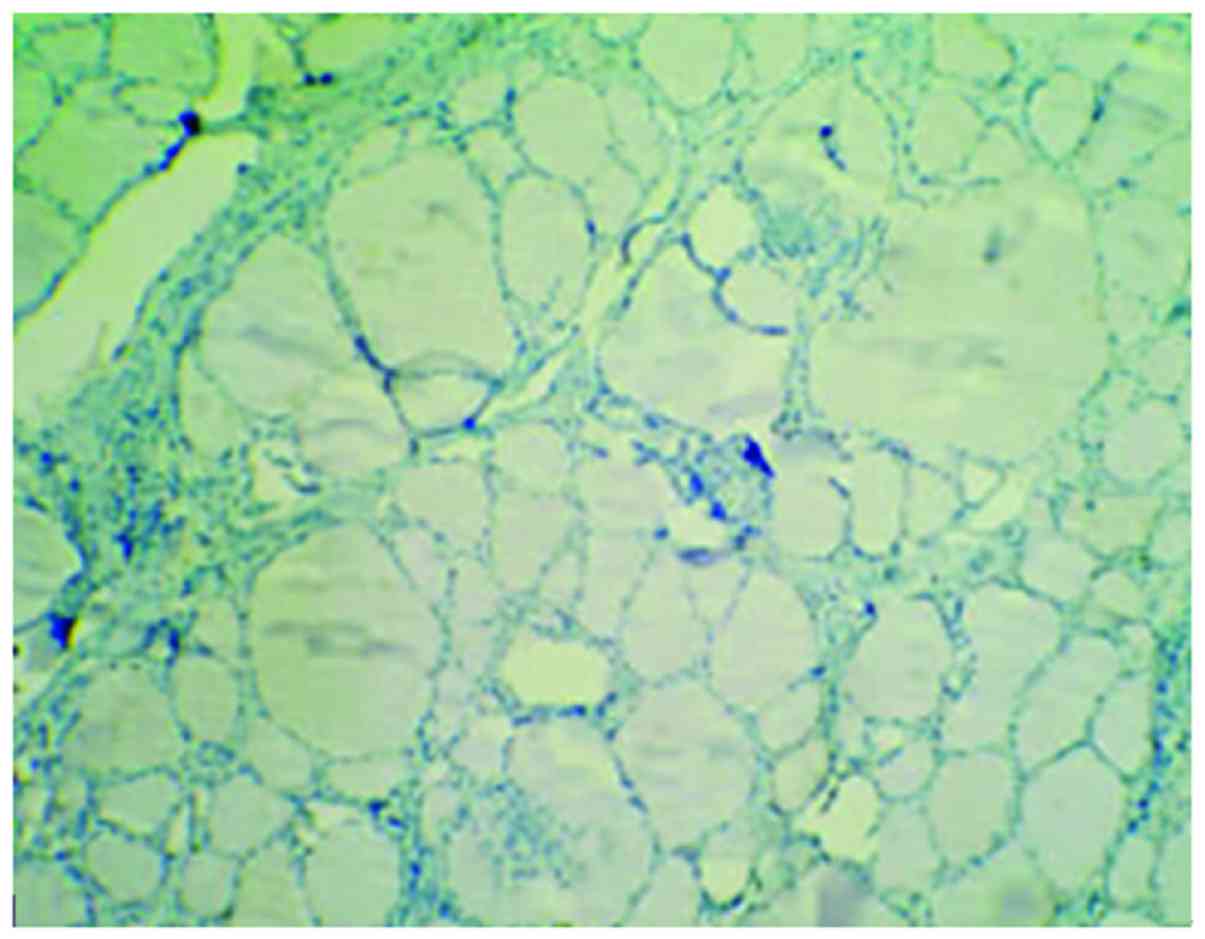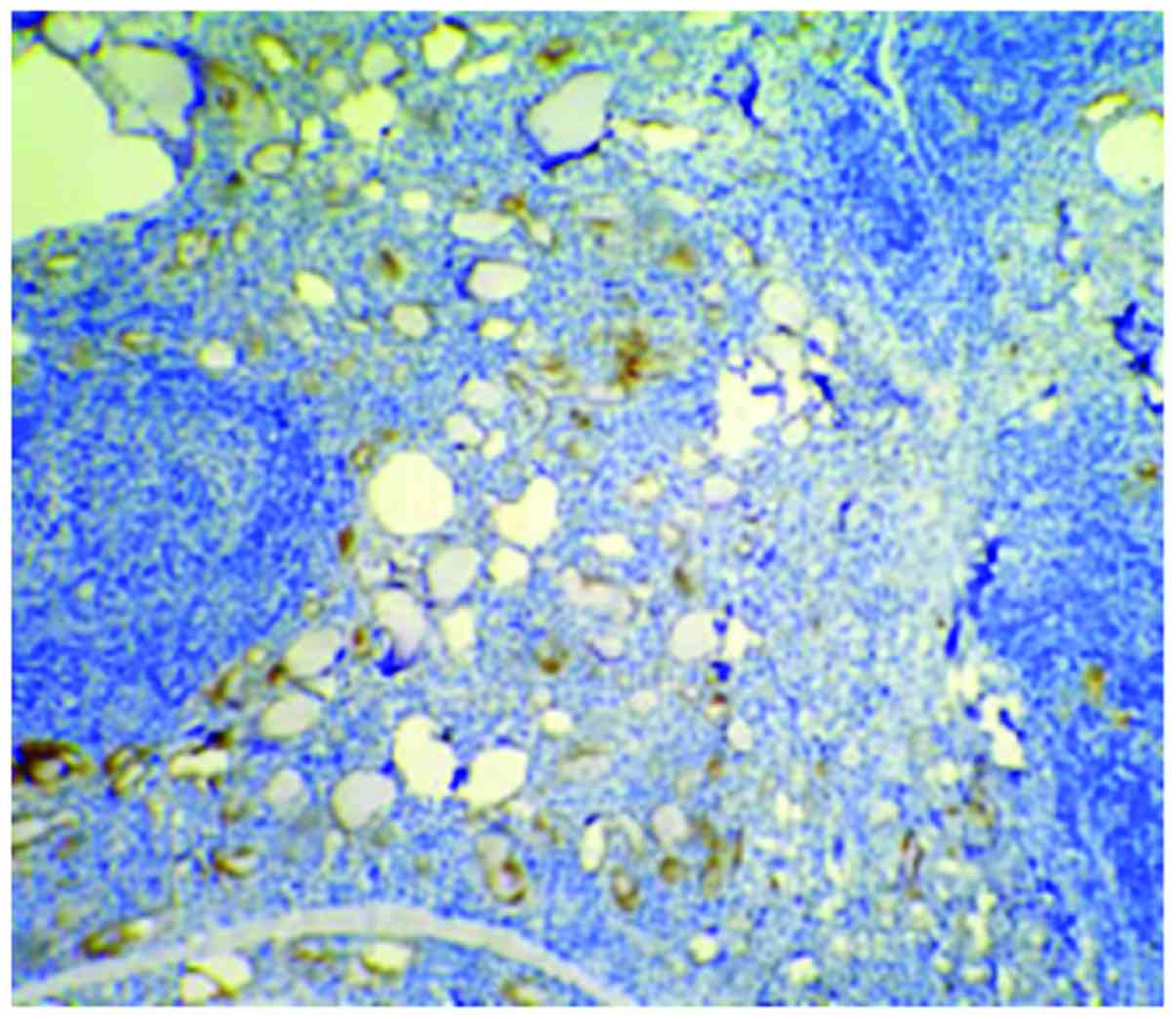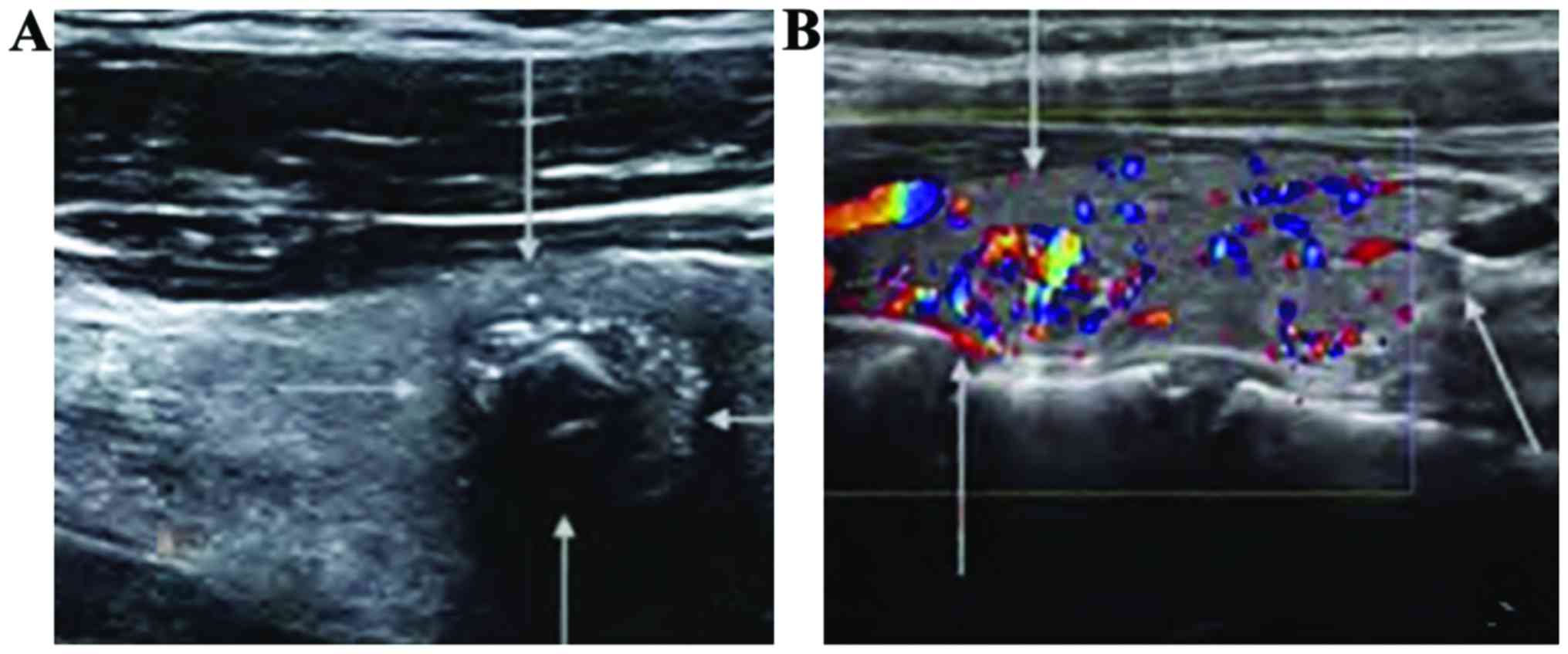HBME-1 expression in differentiated thyroid carcinoma and its correlation with the ultrasonic manifestation of thyroid
- Authors:
- Published online on: September 15, 2017 https://doi.org/10.3892/ol.2017.6971
- Pages: 6505-6510
-
Copyright: © Qiao et al. This is an open access article distributed under the terms of Creative Commons Attribution License.
Metrics:
Total
Views: 0 (Spandidos Publications: | PMC Statistics:
)
Total PDF Downloads: 0 (Spandidos Publications: | PMC Statistics:
)
Abstract
We investigated expression of the protein human bone marrow endothelial cell marker-1 (HBME-1) in differentiated thyroid carcinoma tissues, and analyzed its correlation with ultrasonic manifestation of thyroid. The immunohistochemistry (IHC) staining method was used to measure the expression of HBME-1 in patient with nodular goiter (control group), papillary differentiated thyroid carcinoma (papillary carcinoma group) and follicular differentiated thyroid carcinoma (follicular carcinoma group) to investigate the differences in expression of HBME-1. We further analyzed the correlation of the expression of HBME-1 in the papillary carcinoma group and the follicular carcinoma group with ultrasonic manifestation of thyroid. In both the papillary carcinoma group and the follicular carcinoma group, the levels of HBME-1 in affected tissues and the IHS score of HBME-1 expression were higher than those in the control group (p<0.05). In the papillary carcinoma group, the mean IHS score of HBME-1 expression in affected tissues was higher than in the follicular carcinoma group (p<0.05). There were no statistically significant differences in comparison to HBME-1 expression in affected tissues between the papillary carcinoma group and the follicular carcinoma group (p>0.05). Between the papillary carcinoma group and the follicular carcinoma group, the differences in the comparison of the nodule diameter, echo, shape, boundary, calcification and blood flow signal were statistically significant (p<0.05), but incidence rate of enlargement of cervical lymph nodules between the groups were not statistically significant (p>0.05). Among patients in the papillary carcinoma group, the comparison of the nodule diameter, echo, shape, boundary, calcification and blood flow signal between the HBME-1‑positive patients and the HBME‑1-negative patients showed no statistical significance (p>0.05), but in the nodules of HBME-1-positive patients, the proportion of blood flow signal was higher than that in the nodules of HBME-1-negative patients. Among patients in the follicular carcinoma group, there was no statistically significant differences in the comparison of ultrasonic manifestation of thyroid (p>0.05). Therefore, there are difference in HBME-1 expression and ultrasonic manifestations of thyroid in patients with papillary carcinoma and follicular differentiated thyroid carcinoma.













